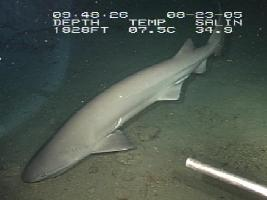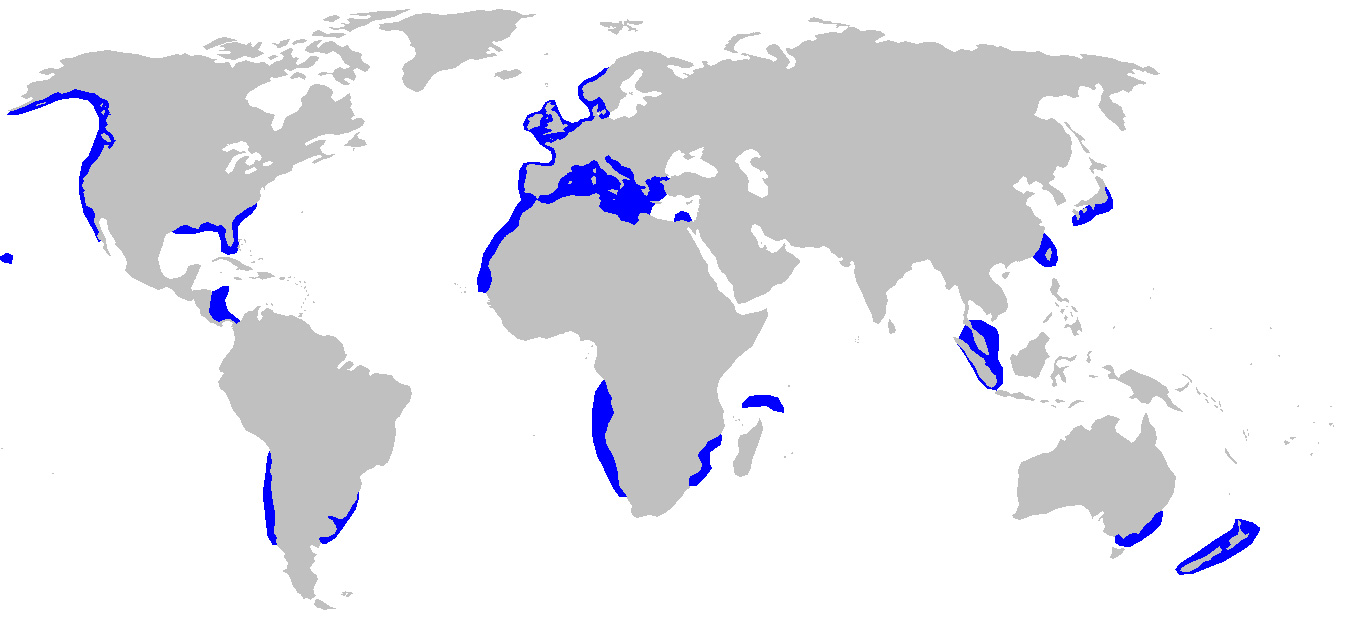
Description de l'animal
The Bluntnose sixgill shark, scientifically known as Hexanchus griseus, is a fascinating and ancient species of deep-sea shark that has roamed the oceans for millions of years, virtually unchanged. This species belongs to the Hexanchidae family, which is notable for its members' primitive features, reminiscent of sharks from the Jurassic period. The bluntnose sixgill shark is particularly remarkable for its size, mysterious habitat, and unique physical characteristics that set it apart from most other shark species.One of the most distinctive features of the bluntnose sixgill shark is, as its name suggests, the presence of six gill slits on each side of its broad head, unlike the five found in most other shark species. This trait is a throwback to an ancient lineage of sharks, making it a subject of great interest to scientists and researchers. The shark's nose is blunt and wide, giving it a somewhat unusual appearance compared to the more streamlined profiles of other sharks.
The bluntnose sixgill shark can reach impressive sizes, with adults typically growing to lengths of 4.8 meters (about 16 feet), although some individuals have been recorded at lengths of over 6 meters (nearly 20 feet). Their bodies are robust and elongated, with a dark gray to brown coloration on the top and lighter shades on the underside, helping them to blend into the deep-sea environments they inhabit.
These sharks are found in temperate and tropical oceans around the world, from coastal shallows to the outer continental shelf and down to depths of over 2,500 meters (8,200 feet). However, they are most commonly found in deep waters, where they spend most of their time near the sea floor. Despite their preference for the deep, juveniles are occasionally found in shallower waters, which is thought to be a strategy to avoid predation by larger sharks.
The bluntnose sixgill shark is a powerful and opportunistic predator, feeding on a wide variety of prey, including fish, rays, crustaceans, mollusks, and even other sharks. Its large size and muscular body enable it to tackle significant prey, while its six gill slits allow for efficient respiration, even at the slow swimming speeds typical of deep-sea hunters.
Reproduction in the bluntnose sixgill shark is ovoviviparous, meaning the eggs hatch inside the female's body, and the young are born alive and fully formed. This reproductive strategy is advantageous in the deep-sea environment, where the slow-growing juveniles are protected by their mother until they are capable of fending for themselves.
Despite their formidable size and ancient lineage, bluntnose sixgill sharks remain shrouded in mystery due to their deep-sea habitat, which makes them difficult to study. They are considered to be of low concern for extinction by the International Union for Conservation of Nature (IUCN), but like many deep-sea creatures, they face threats from human activities such as deep-sea fishing and habitat destruction.
In summary, the bluntnose sixgill shark is a remarkable survivor from a bygone era, embodying the mystery and majesty of the deep sea. Its unique physical characteristics, ancient lineage, and adaptation to deep-sea life make it a fascinating subject for study and an important part of the marine ecosystem.
Carte de répartition

Nouvelles photos d'animaux
Top 10 des animaux
- Dolphin gull (Leucophaeus scoresbii)
- Japanese macaque (Macaca fuscata)
- Greek tortoise (Testudo graeca)
- Stone loach (Barbatula barbatula)
- Galápagos tortoise (Geochelone nigra complex)
- Russian tortoise (Testudo horsfieldii)
- Diana monkey (Cercopithecus diana)
- Moustached guenon (Cercopithecus cephus)
- Common flying dragon (Draco volans)
- Galápagos penguin (Spheniscus mendiculus)